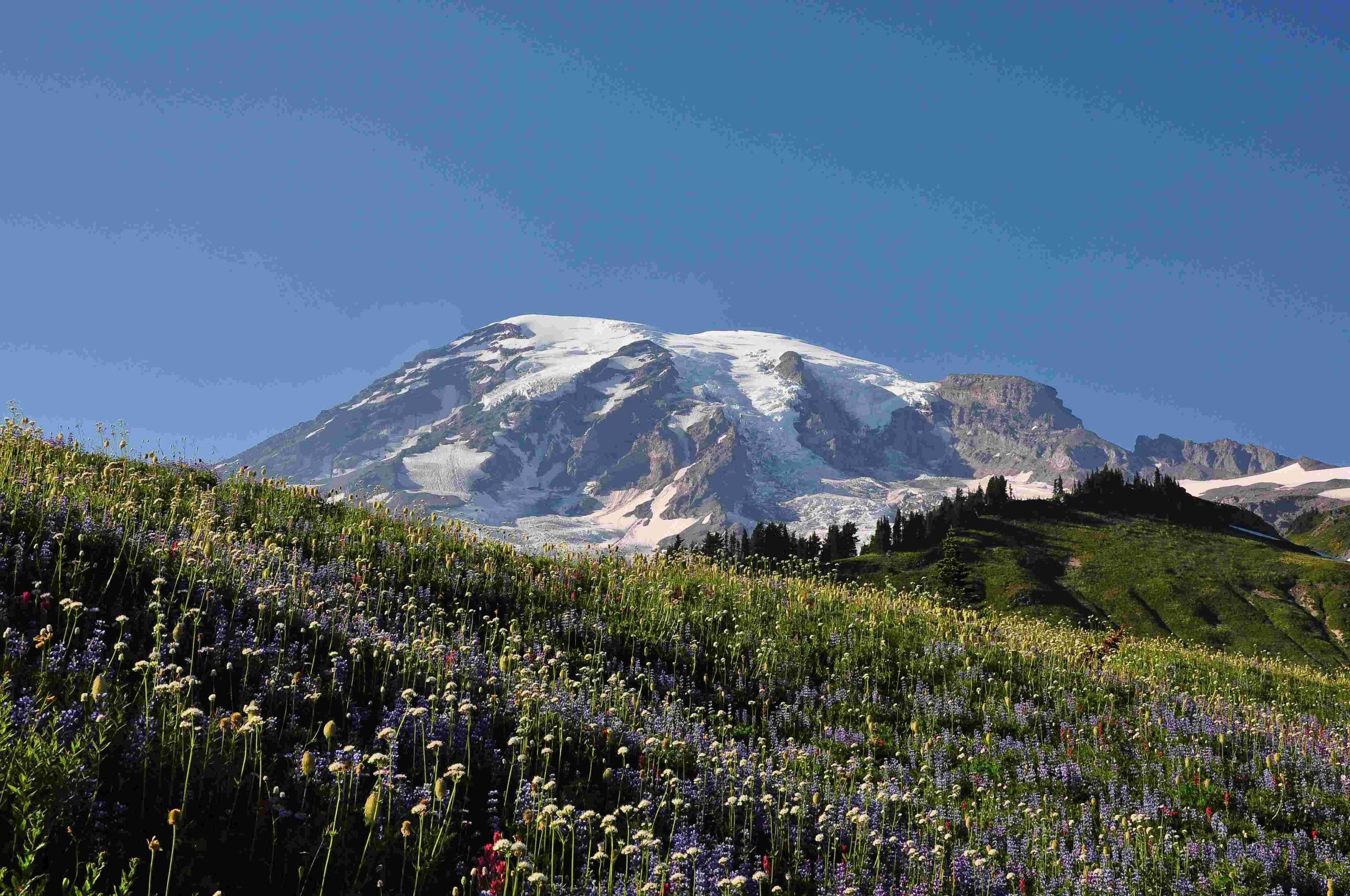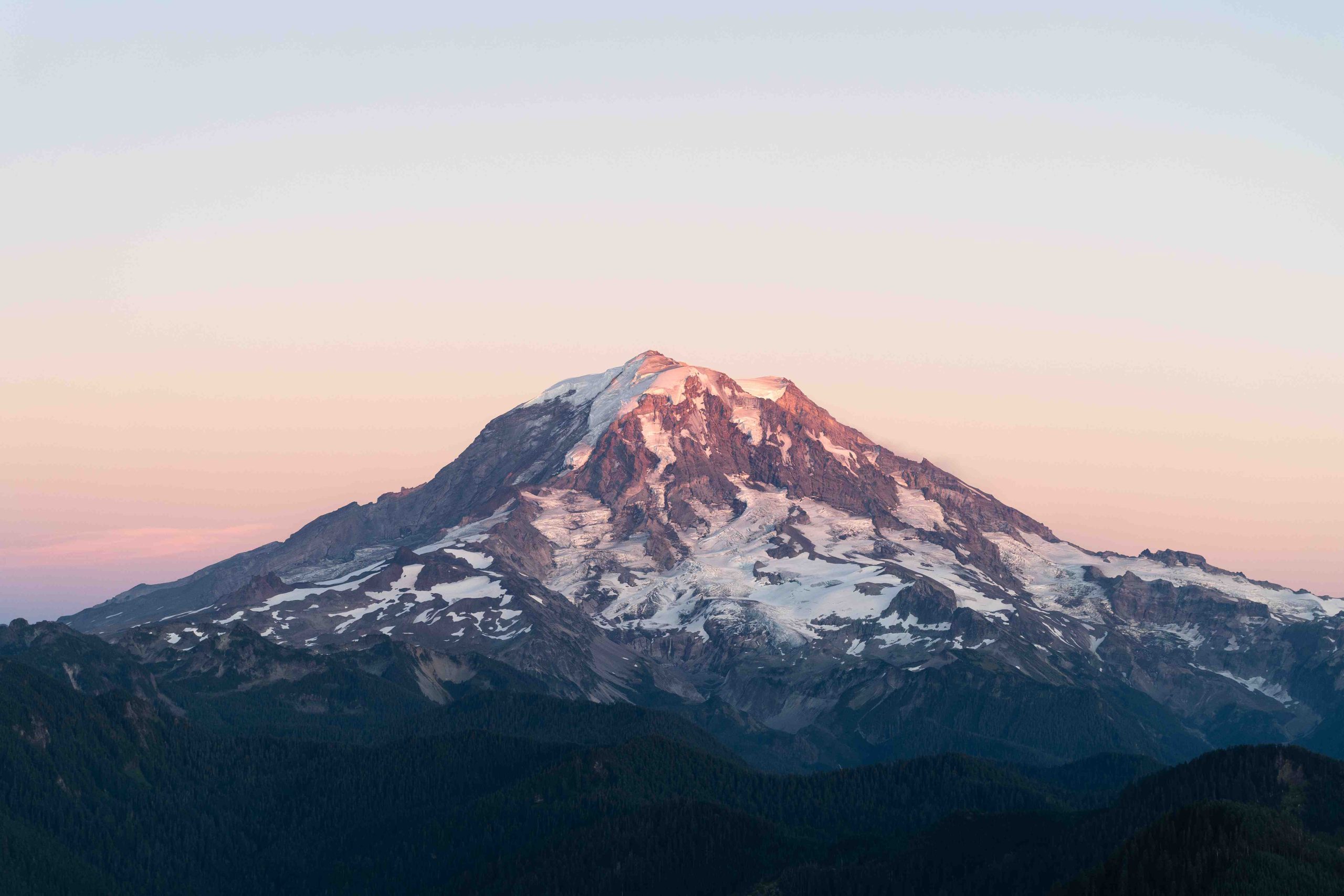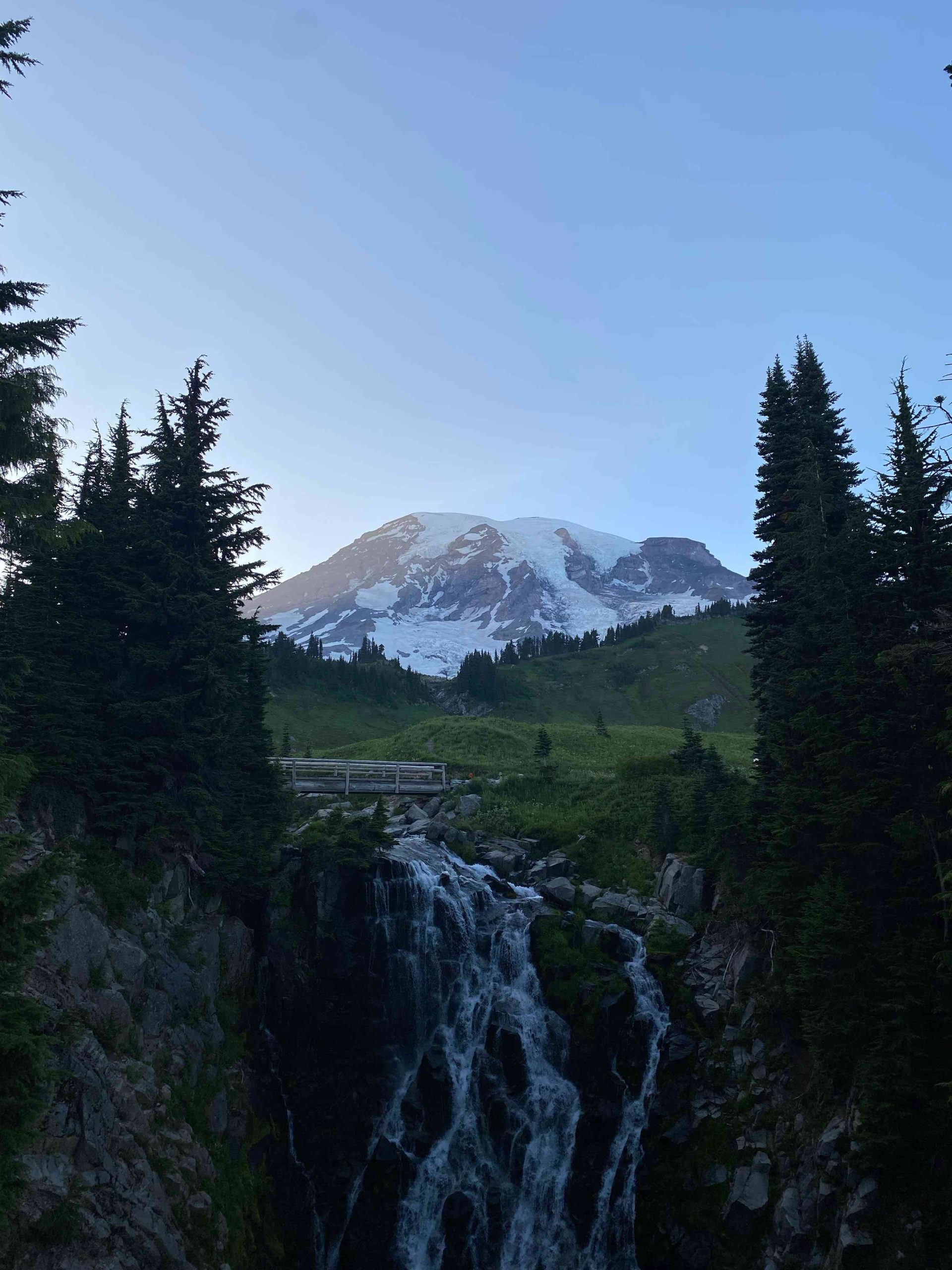Mount Rainier National Park Eagle Peak offers a strenuous but rewarding hiking experience. This 7.2 to 8.4-mile roundtrip trail challenges hikers with steep ascents and rocky terrain, culminating in panoramic views of Mount Rainier and surrounding peaks. Located in the Longmire area, the Eagle Peak trail provides a less crowded alternative to popular routes, making it an ideal choice for experienced hikers seeking solitude and stunning alpine scenery.
What is the Trail Distance and Duration for Eagle Peak?

The Eagle Peak trail in Mount Rainier National Park presents a challenging journey for hikers:
- Distance: 7.2 to 8.4 miles roundtrip (variations depend on the source)
- Duration: Approximately 5 hours for the entire hike
- Elevation Gain: 2,955 to 3,041 feet
- Difficulty: Strenuous due to steep ascents and rocky terrain
This trail demands a full day’s commitment and proper preparation. Hikers should plan accordingly, bringing sufficient water, snacks, and appropriate gear for changing weather conditions.
How High is Eagle Peak and What are the Notable Elevation Changes?

Eagle Peak offers a significant elevation challenge within Mount Rainier National Park:
- Starting Elevation: 2,700 feet at the trailhead
- Peak Elevation: Approximately 5,700 feet at Eagle Peak Saddle
The trail’s elevation profile is characterized by:
- A steep ascent through dense forest for the first two miles
- A more gradual climb for another mile to a meadow
- An extremely steep and rocky final 0.5 mile to the saddle
This varied terrain provides hikers with a diverse and engaging experience, transitioning from lush forests to open alpine meadows.
Where is the Trailhead Located and What are the Parking Options?
Accessing the Eagle Peak trail in Mount Rainier National Park is straightforward:
- Trailhead Location: In Longmire, just past the historic Nisqually Suspension Bridge
- Parking Options:
- Small pullout near the trailhead
- Additional parking in front of the Longmire Community Building
- Main Longmire parking area for larger vehicles
Important Note: The Nisqually Suspension Bridge has a 3-ton (6,000 pounds) weight limit. Larger vehicles must park in the main Longmire area and cross the bridge on foot.
Are There Facilities for Visitors with Mobility Challenges?
Unfortunately, the Eagle Peak trail is not well-suited for visitors with mobility challenges:
- No specific facilities are mentioned for those with mobility issues
- The trail features steep switchbacks and rocky terrain
- The strenuous nature of the hike makes it unsuitable for those with limited mobility
Visitors with mobility concerns should consider alternative, more accessible trails within Mount Rainier National Park.
What are the Best Viewpoints for Mount Rainier Along the Trail?
The Eagle Peak trail offers several spectacular viewpoints of Mount Rainier and surrounding landscapes:
- Eagle Peak Saddle: The primary viewpoint at the trail’s end
- Mount Rainier peeks out from around Eagle Peak’s shoulder
-
Panoramic views of surrounding peaks and valleys
-
Beyond the Saddle: For even more impressive views
- Continue towards Chutla Peak to a backcountry bench
-
Unobstructed views of Mount Rainier’s majestic profile
-
Alpine Meadows: As you ascend and emerge from the forest
- Expansive views of Mount Adams and Mount St. Helens
- On clear days, you might even spot Mount Hood in the distance
These viewpoints reward hikers with breathtaking vistas that showcase the beauty of the Cascade Range.
What Wildlife Might Hikers Encounter on Eagle Peak?
The diverse ecosystems along the Eagle Peak trail provide habitats for various wildlife:
- Forest Areas:
- Black bears
- Deer
-
Various bird species (woodpeckers, jays, chickadees)
-
Alpine Meadows:
- Marmots
- Mountain goats (occasionally)
-
Pikas
-
Throughout the Trail:
- Squirrels and chipmunks
- Raptors (hawks, eagles)
Hikers should maintain a safe distance from wildlife and never feed animals. Proper food storage is essential to prevent attracting bears and other creatures to campsites.
What is the Best Time of Year to Hike Eagle Peak?
The optimal hiking season for Eagle Peak in Mount Rainier National Park typically runs from late June to early October:
| Season | Conditions | Considerations |
|---|---|---|
| Summer (July-August) | – Warm temperatures – Clear skies – Wildflowers in bloom |
– Busiest time – Potential for crowds – Reservations may be necessary |
| Early Fall (September-Early October) | – Cooler temperatures – Fall colors – Fewer crowds |
– Potential for early snow – Shorter daylight hours – More variable weather |
| Late Spring/Early Summer (Late June) | – Snowmelt – Waterfalls at peak flow – Emerging wildflowers |
– Lingering snow possible – Trail conditions may be muddy – Some areas might be inaccessible |
Always check current trail conditions and weather forecasts before embarking on your hike, regardless of the season.
What Should Hikers Pack for the Eagle Peak Trail?
Given the strenuous nature of the Eagle Peak trail, proper preparation is crucial. Here’s a comprehensive packing list:
- Essentials:
- Plenty of water (at least 2-3 liters per person)
- High-energy snacks and lunch
- First-aid kit
- Navigation tools (map, compass, GPS device)
-
Headlamp or flashlight with extra batteries
-
Clothing:
- Moisture-wicking base layers
- Insulating mid-layer (fleece or wool)
- Waterproof and breathable outer layer
- Sturdy hiking boots
- Extra socks
-
Hat and gloves
-
Sun Protection:
- Sunscreen
- Sunglasses
-
Sun hat
-
Emergency Items:
- Emergency shelter (e.g., lightweight tarp or emergency blanket)
- Fire starter and matches in a waterproof container
-
Whistle for signaling
-
Optional:
- Trekking poles for stability on steep sections
- Camera to capture the stunning views
- Binoculars for wildlife viewing
Remember to pack out all trash and follow Leave No Trace principles to preserve the natural beauty of Mount Rainier National Park.
How Does Eagle Peak Compare to Other Trails in Mount Rainier National Park?
Eagle Peak offers a unique hiking experience compared to other trails in Mount Rainier National Park:
- Difficulty Level:
- More challenging than popular trails like Skyline or Naches Peak Loop
-
Less crowded than the Wonderland Trail or Paradise area hikes
-
Views:
- Provides a different perspective of Mount Rainier compared to northern trails
-
Offers panoramic views of multiple Cascade peaks
-
Ecosystem Diversity:
- Traverses through old-growth forests and alpine meadows
-
Showcases a variety of plant and animal life
-
Accessibility:
- Located in the less-visited Longmire area
-
Requires more planning and preparation than front-country trails
-
Season Length:
- Typically snow-free earlier than higher elevation trails
- Accessible for a longer portion of the year
While Eagle Peak may not be as well-known as some of the park’s iconic hikes, it offers a rewarding experience for those seeking a challenge and solitude in the wilderness of Mount Rainier National Park.

